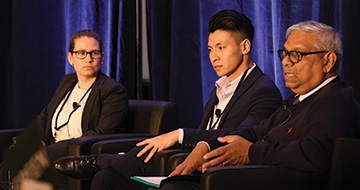
In determining which savings options to offer employees, a key component is understanding the workforce and its goals, as well as communicating the offering in a way they can understand, according to a panel on engaging workers in defined contribution pensions at Benefits Canada’s 2019 DC Plan Summit in Banff, Alta. in February.
Thak Bhola, manager of pension, investments and administration at Goodyear Canada Inc., oversees a number of retirement savings plans, including a group tax-free savings account that was introduced in response to employee requests.
Read: Engaging millennials in retirement requires different solutions
KPMG Canada also recently introduced a TFSA, largely due to its younger employee demographic, said Emilie Inakazu, the organization’s senior manager of benefits and pension. “They’re looking for flexibility, they’re looking for a mechanism to support more short-term savings goals. And [registered retirement savings plans] work well if you’re saving for a house, but ultimately it’s still really tied to retirement and it’s a more long-term savings vehicle. So the TFSA provides that flexibility.”
While it’s important to offer the right options for employees, communication is also integral. At Goodyear, Bhola partners with his record keepers and investment managers at least annually, travelling to various locations for presentations and one-on-one meetings with plan members and their spouses. “In terms of the engagement level, I think we are doing very well. There’s no money left on the table, as far as I know.”
Inakazu highlighted the importance of digital communications, noting it’s easier to drive action when everything is in the same place and one click away instead of using paper-based communications. “It’s too many steps to then have to sit down at a computer right when you open that envelope.”
Read: Eliminating ‘tyranny of choice’ in DC plan enrolment
But when communication doesn’t change behaviour, it may be time to go back to plan design. Stanley Diep, benefits representative of people and culture at Lululemon Athletica, said that, despite communication about the company’s group RRSP, employee participation wasn’t changing. The company is considering some plan design changes, he noted, such as reducing the vesting period for its employer match and removing the 90-day waiting period so people can enroll on the first day of onboarding.
Plan sponsors can also consider better targeted communications, said Diep. “We talked about targeting employees who are already vested but are not participating in the plan, because those employees are actually leaving free money on the table. So we want to come up with a communication strategy to just inform them about that as well.”
Read more coverage from the 2019 DC Plan Summit.
